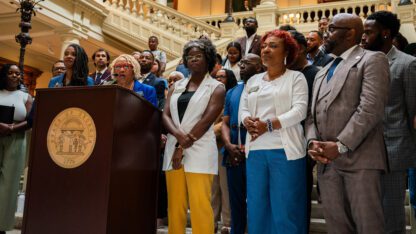Atlanta Researcher Looks To Trees To Help Ease Highway Air Pollution
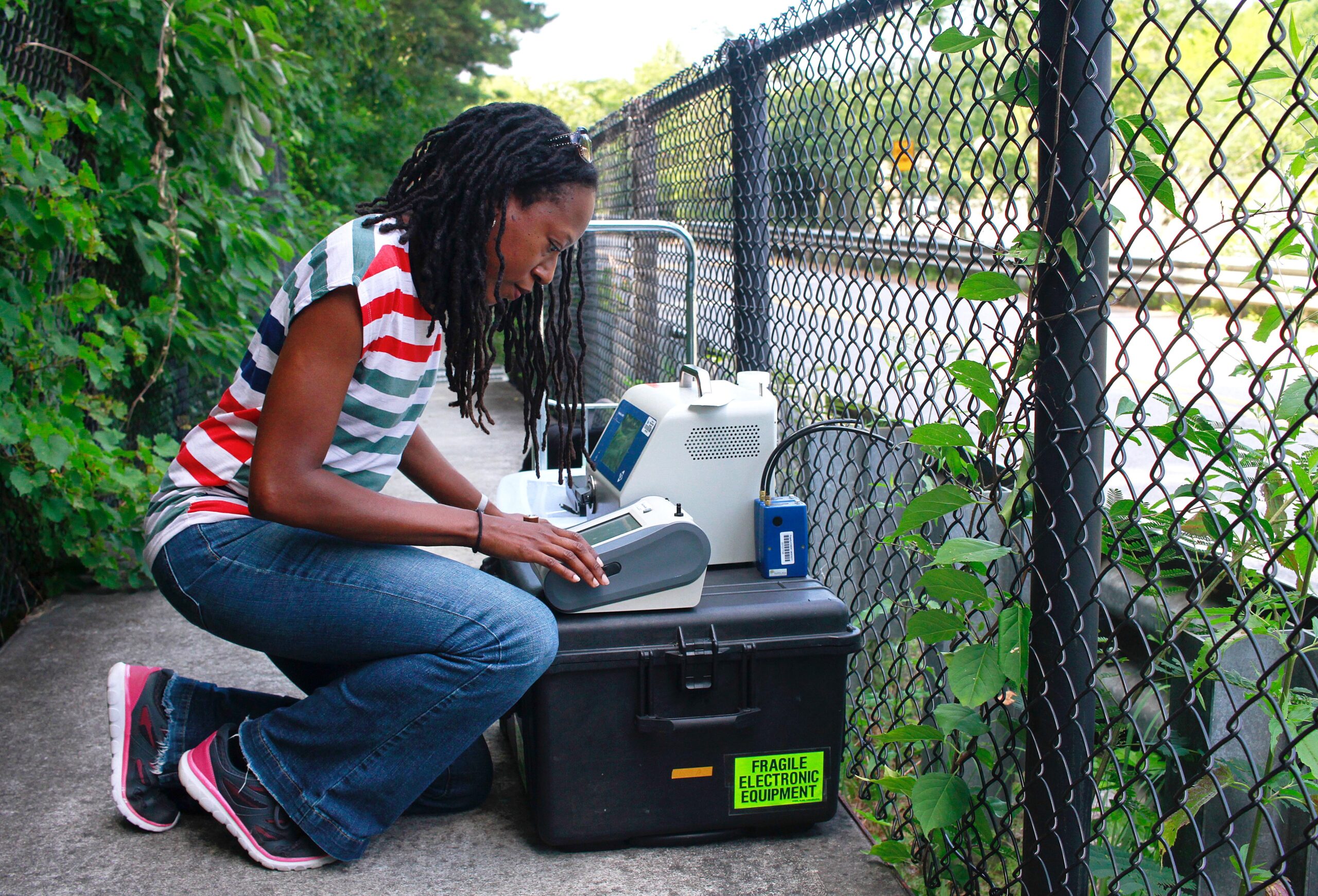
Air pollution expert Christina Fuller, a Georgia State University public health professor, is doing research on how effective trees can be in helping to filter out pollution.
Kaitlin Kolarik / For WABE
Plenty of Atlantans spend time on highways, speeding or inching or swerving along. But many people spend a lot of time near the highways, too: at their homes, schools or workplaces.
And that’s not great for their health.
In addition to greenhouse gases that cause climate change, car and truck emissions have been linked to heart and lung problems.
So a Georgia State University public health professor is studying how effectively trees can help filter out some of that pollution.
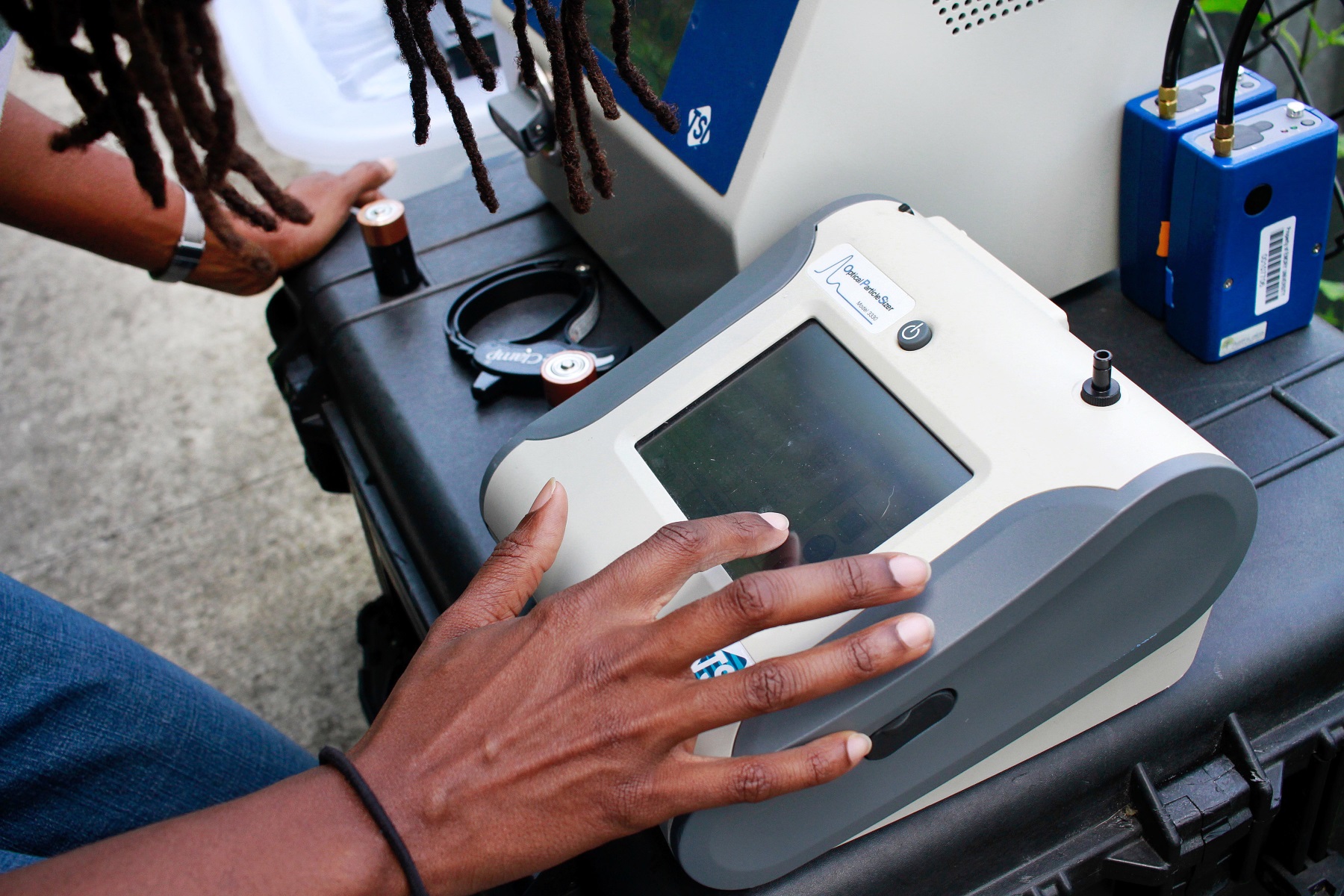
Air pollution expert Christina Fuller is focusing specifically on ultrafine particles, which are associated with asthma and heart disease.
“They’re too small to be able to see,” she said. “But they have an effect on health.”
Ultrafine particles can come from a variety of places, she said, but car tailpipes are a big contributor, and their levels are high close to roads.
At a parking lot on Georgia Tech’s campus, with a close-up view of the Downtown Connector, Fuller and a handful of students set up their experiment, to test the air in two places. One, right by the highway; the other, behind a row of shaggy, glossy-leaved magnolias.
“One of the reasons we picked this location is because it has these beautiful magnolia trees,” Fuller said.
She and her students are setting up the same experiment around metro Atlanta, to figure out what kinds of trees, planted in what kinds of configurations, are best at filtering ultrafine particles. Fuller said she hopes to use the research to inform policy and planning decisions, and to help people who live near highways.
“Because there’s hundreds of thousands of people who live close to roads in the United States,” she said.
A study from 2014 found that 3.2 million students nationwide between kindergarten and 12th grade attended a school less than 350 feet from a major road.
And historically, highways have gone through poorer communities and communities of color, which then bear the brunt of the pollution.
The 2014 study also found that schools with mostly black students and schools where most students were eligible for free or reduced meals were more likely to be within about 800 feet of major roads than other schools.
Those are the kinds of places where Fuller has focused her research, too, but she points out that in Atlanta, there’s an influx of higher-income people moving in town, often near highways.
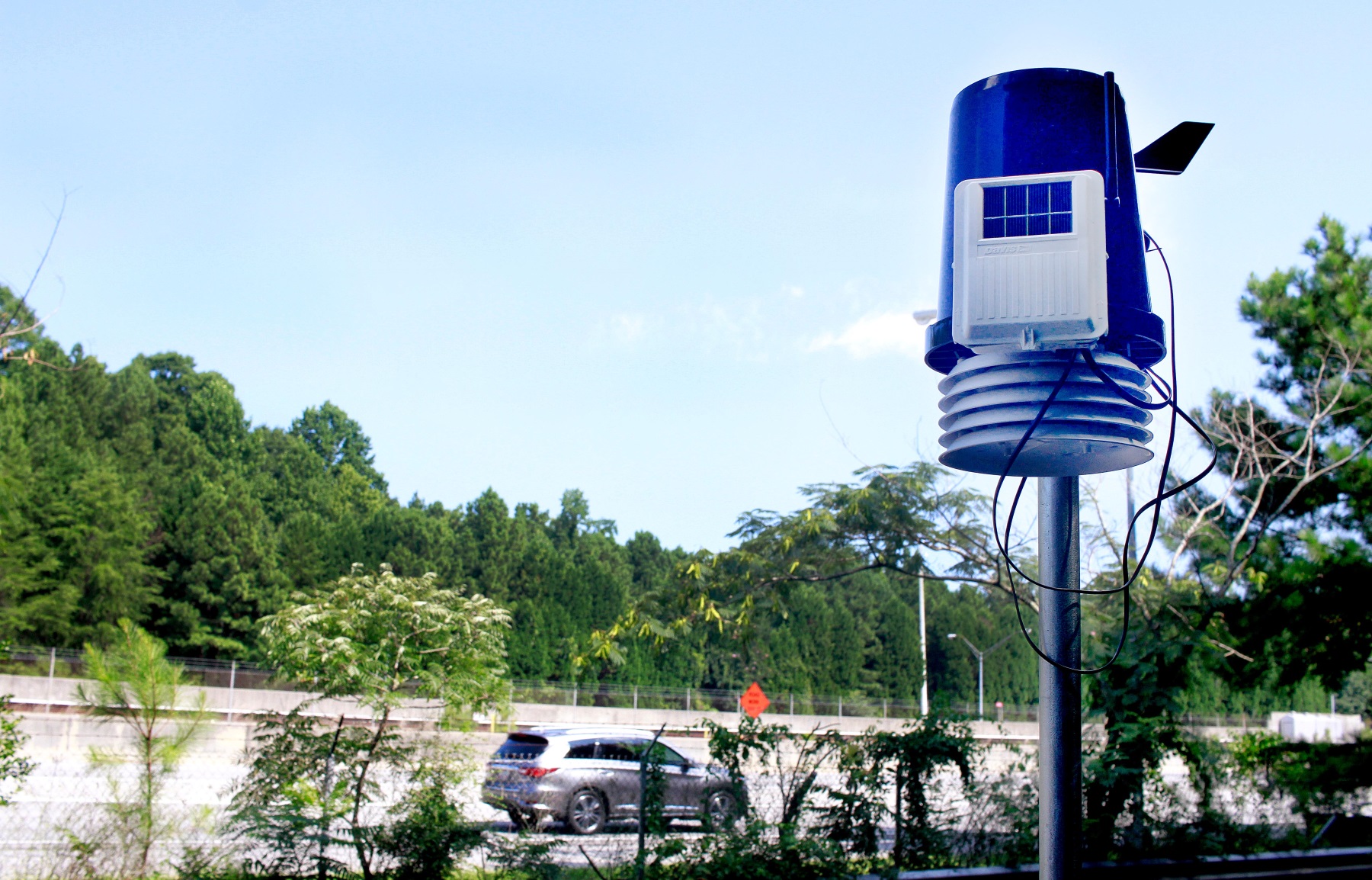
From her experiment setup at Georgia Tech, she can look across the connector at buildings with balconies over the highway.
“I see a lot of these new developments,” she said. “As an air pollution scientist, I’m like, that’s not too good. It can really be poor for your health.”
She explained trees can help by capturing some of the ultrafine particles and also forcing particles to drop down out of the air onto the ground, so they don’t end up in people’s lungs.
“When I tell people about the work I’m doing, people say, ‘Oh, that makes sense, but I’ve never thought of that before,’” she said. “It’s not in the conversation of larger-built infrastructure. You just think of what you can build.”
That is starting to change, though, said Max Zhang, a mechanical engineering professor at Cornell University.
“This is a movement that has gathered some pretty large momentum recently,” he said.
Zhang is studying using trees as pollution barriers in Detroit; Oakland, California, and Louisville, Kentucky.
One important caveat to the idea, he said, is that design matters.
So it matters how the trees are planted – if there are gaps, for instance, the pollutants could just funnel through them. And local geography matters, too – the same trees won’t work as well everywhere.
Another thing: Trees are just a part of the solution. Zhang said it’s important to cut down emissions from their source.
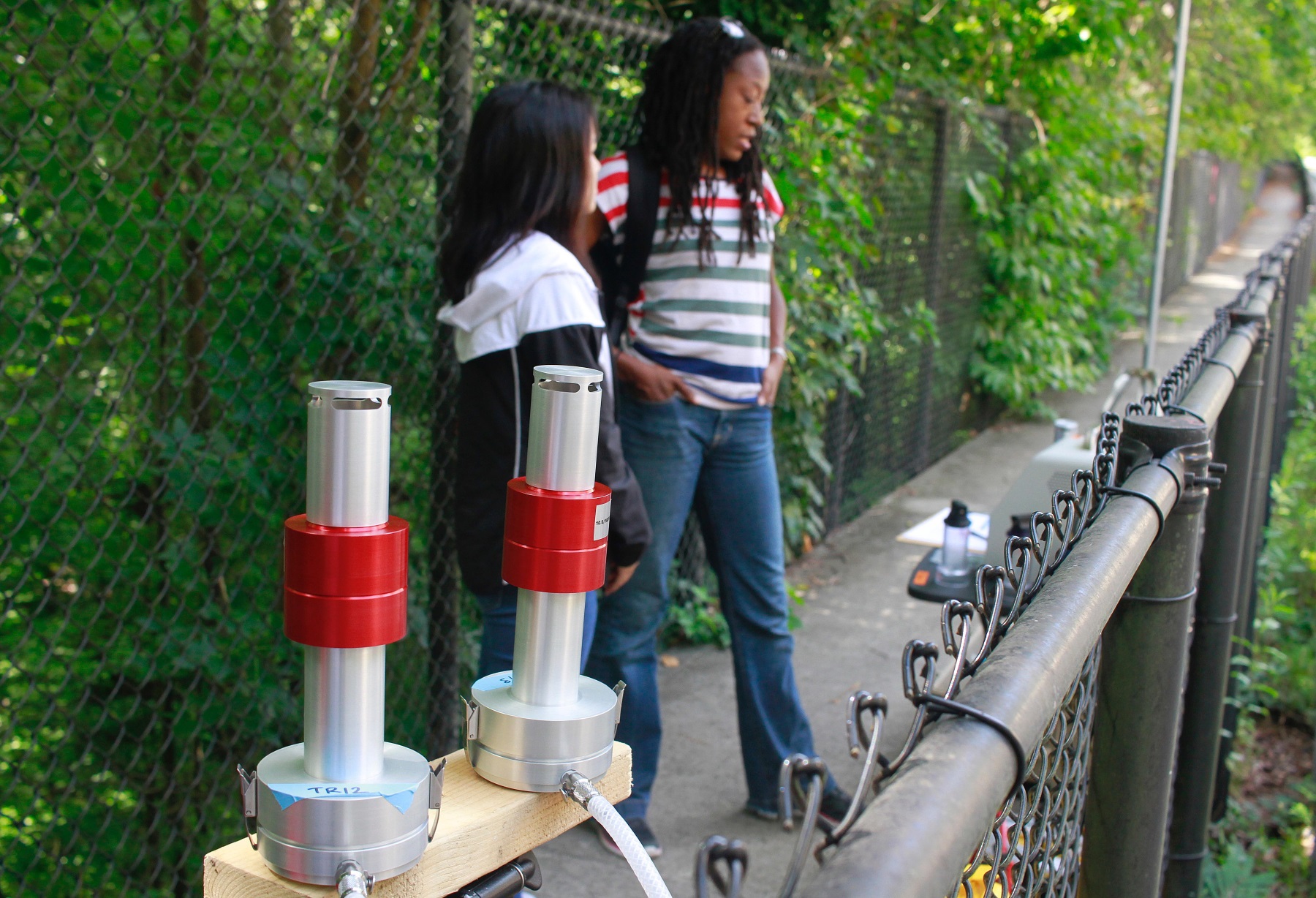
Fuller is still working on her research, but she said at this point she knows evergreens, like magnolias and pine trees, are some of the best, since they can block pollution year-round. And trees whose leaves go all the way to the ground are more effective, too, so that the ultrafine particles don’t just sweep in below the branches.
And big old trees are better than young ones.
“Atlanta, in particular, has so many trees,” she said. “And at the same time, there’s a lot of building going on. So when new buildings are being planned out, if we can keep some of those trees that are already mature in the building plans, then they can get the most benefit.”



